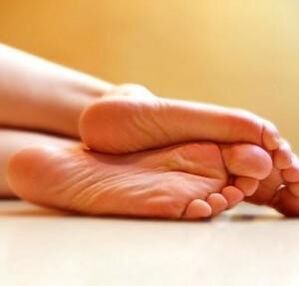Arthrosis is a pathology that occurs in the joint due to the destruction of the cartilage tissue that covers the head of the bones that enter the joint. Osteoarthritis can develop in the joints of the limbs and spine, especially affecting the knee joint (gonarthrosis) and the hip joint (coxarthrosis).
It is also important to understand what arthrosis is so as not to aggravate the disease with improperly taken measures.
Causes of arthrosis

The causes of arthrosis of the joints are basically related to the aging of the cartilage cells, so arthrosis is most often diagnosed in old age. Excessive stress also leads to premature aging of the joint. Athletes and those who work hard all the time are also at risk.
In addition, the causes of arthrosis are often associated with inadequate joint nutrition or slowed metabolism. This can be a joint injury or a disturbance in the blood supply to the periarticular tissues.
Destruction of cartilage can also cause a disease such as psoriasis, in which case doctors observe a specific form of psoriatic arthrosis: the skin of the patient's joint is covered with psoriatic plaques, and the skin turns gray.
Prolonged inflammation (arthritis) can cause arthrosis, a prolonged inflammatory process that threatens the complex form of deforming arthrosis without proper treatment.
Being overweight can also be at fault for the development of the disease, as the higher the body weight, the greater the constant strain on the joints.
Studies have also shown that a genetic factor is sufficient for the occurrence of arthrosis. For example, arthrosis of the interphalangeal joints of the hand is 10 times more common in women.
Symptoms
Common symptoms suggestive of arthrosis of the joints are pain syndrome and stiffness in movement.
Arthrosis pain syndrome most often occurs when the joint is loaded and the discomfort at rest disappears. The pain can also occur with sudden movements or twists while lasting for a short time and only occurs with the next awkward movement. These signs of arthrosis are reason enough to see a doctor right away.
At an advanced stage, the pain syndrome may become permanent. Over time, symptoms such as rupture of the joints and a feeling of muscle tension around the joint may also appear. Rash in the joint area is characteristic of psoriasis arthrosis.
Types of arthrosis
Depending on which part of the body affected which joint, arthrosis is as follows:

- hip joint;
- knee joints;
- hands;
- spine;
- stop.
Psoriatic arthrosis most commonly affects the knee joints and hand joints.
Arthrosis has four stages, the fourth is also called deforming arthrosis, when pathological changes in the joint become irreversible, the joint itself is virtually destroyed and ceases to perform its functions.
If the pathology affects several joints at the same time, polyarthrosis is diagnosed.
Psoriasis of arthrosis is diagnosed when the usual symptoms of arthrosis are accompanied by special skin rashes.
Diagnostics
It is almost impossible to make a correct diagnosis, and even more so to prescribe appropriate treatment on its own. The most likely way would be to see a doctor. Modern diagnostic methods allow the practitioner to apply the most optimal direction of treatment.
The main types of diagnostics
- X-ray: the picture shows the degree of joint deformity;
- laboratory tests: confirmation of the presence of the pathological process in the joint will be increased ESR in the blood;
- analysis of synovial fluid and histological examination of the synovium: allows the physician to determine the presence of abnormal formations in the joint.
In addition, the doctor should examine and feel the affected joint. Thus, visual examination reveals signs of psoriatic arthrosis. Only an integrated approach to studying test results can give a true picture of the disease and confirm the diagnosis.
Development and course of the disease
The development of arthrosis usually goes unnoticed by the patient, the pain is barely noticeable in the first stage of the disease, and is not a major concern. The first thing patients usually feel is an uncomfortable feeling after a long rest, such as short-term stiffness in the joints in the morning. Over time, the relationship between physical activity and joint pain can be traced. The mild pain associated with the exertion begins to intensify. In the following stages, the pain can be bothersome during periods of rest and at night. The pain of arthrosis varies in frequency, intensifies during the exacerbation period, and may not appear at all during the remission period.
Patients usually go to the doctor when they already have very pronounced pain syndrome and limited mobility, which makes normal living impossible. Advanced stage of arthrosis is also indicated by symptoms such as lameness and subluxation of the joints, the occurrence of which is accompanied by large deformities of the joint and damage to the cartilage tissue.
Treatment

The earlier therapy is started, the greater the chance that the joint will become fully functional again, although modern medicine does not speak of a complete disappearance of the disease. The main factors in the treatment of arthrosis are its complexity and consistency. The physician must consider a number of different factors: the stage of the disease, the specifics of the clinical picture, the reasons for its occurrence, and the extent to which the musculoskeletal system is impaired. If acute arthrosis is diagnosed, treatment begins with the prescription of painkillers.
The treatment takes place in three stages:
- Stress relief from the joint.
- Alleviation of synovitis.
- Rehabilitation and prevention measures aimed at slowing the further progression of the disease.
An individual approach is needed in each case. Medicines have different effects on different organisms, and the tolerance and side effects of such medicines must be taken into account. In many cases, the disease is caused by an infection that is already present in the body. Thus, in the case of psoriasis arthrosis, measures are taken to eliminate psoriasis.



















